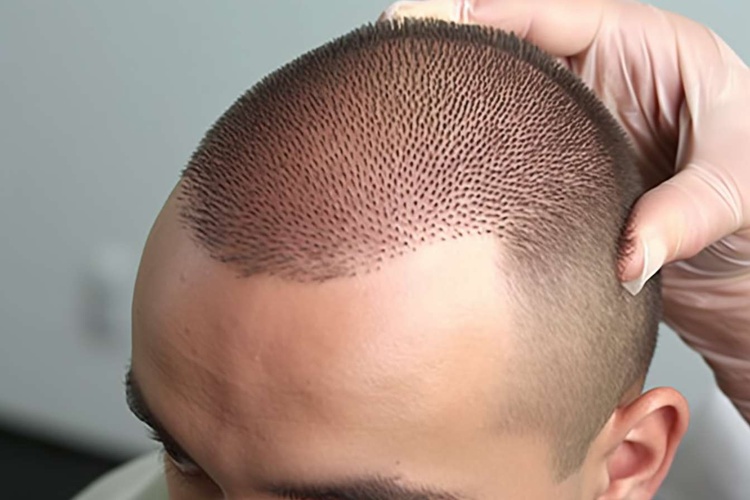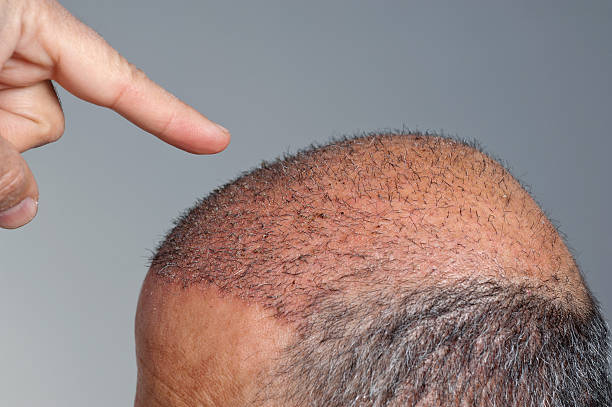Scalp Micropigmentation: A Modern Solution for Hair Loss
Scalp micropigmentation (SMP) has emerged as a groundbreaking technique in the field of hair restoration, offering hope to millions suffering from hair loss worldwide. This innovative procedure involves the meticulous application of pigment to the scalp, creating the illusion of a fuller head of hair or a closely-shaved look. Unlike traditional hair transplants, SMP is non-surgical and requires minimal maintenance, making it an attractive option for those seeking a long-lasting solution to thinning hair or baldness. As the beauty industry continues to evolve, SMP has gained traction among both men and women, challenging societal norms and redefining perceptions of attractiveness and self-confidence.

The Science Behind the Procedure
At its core, scalp micropigmentation is a highly specialized form of cosmetic tattooing. The process involves depositing microscopic dots of pigment into the dermal layer of the scalp using ultra-fine needles. These pigments are carefully selected to match the client’s natural hair color and skin tone, ensuring a seamless blend with existing hair. Unlike traditional tattoos, SMP practitioners use specialized equipment and techniques to create a three-dimensional effect that mimics the appearance of natural hair follicles.
The SMP Process: From Consultation to Completion
The journey to a successful SMP treatment begins with a comprehensive consultation. During this phase, the practitioner assesses the client’s scalp condition, hair loss pattern, and desired outcome. A customized treatment plan is then developed, taking into account factors such as hairline design, density, and color matching. The actual procedure typically requires multiple sessions, each lasting several hours, to build up the desired level of density and achieve a natural-looking result.
Applications Beyond Male Pattern Baldness
While SMP is often associated with treating male pattern baldness, its applications extend far beyond this common condition. Women experiencing diffuse thinning or alopecia can benefit from SMP to create the appearance of fuller hair and camouflage visible scalp areas. Additionally, the technique has proven effective in concealing scars from hair transplant procedures, burn injuries, or accidents. Some practitioners have even adapted SMP techniques to create the illusion of facial hair for men unable to grow beards or mustaches naturally.
The Psychological Impact of SMP
The effects of scalp micropigmentation often transcend the physical transformation, profoundly impacting the psychological well-being of recipients. Many individuals who have undergone SMP report significant improvements in self-esteem and confidence, particularly in social and professional settings. For those who have struggled with hair loss for years, the ability to look in the mirror and see a full head of hair—even if simulated—can be life-changing. This boost in self-image has led to increased interest in SMP as a form of cosmetic therapy, rather than just a cosmetic procedure.
Technological Advancements in SMP
As the field of scalp micropigmentation has grown, so too has the technology supporting it. Recent years have seen the development of more sophisticated pigments that resist fading and color shifts, ensuring longer-lasting results. Advanced needle configurations allow for more precise pigment deposition, resulting in even more realistic-looking outcomes. Some clinics have begun incorporating 3D imaging and computer-assisted design to create highly accurate hairline designs tailored to each client’s facial structure and preferences.
The Global SMP Industry: Trends and Challenges
The scalp micropigmentation industry has experienced rapid growth worldwide, with clinics opening in major cities across the globe. This expansion has been driven by increasing awareness of the procedure, celebrity endorsements, and a growing acceptance of cosmetic enhancements for men. However, the industry also faces challenges, including a lack of standardized training and regulation in many countries. This has led to concerns about inconsistent quality and the potential for adverse outcomes when procedures are performed by inexperienced practitioners.
SMP vs. Traditional Hair Loss Treatments
Compared to other hair loss treatments such as hair transplants, medications, or wigs, SMP offers several unique advantages. It requires no ongoing maintenance beyond occasional touch-ups, typically every few years. The results are immediate and consistent, unlike medications that may take months to show effects and can vary in efficacy from person to person. Additionally, SMP is suitable for individuals with extensive hair loss who may not be candidates for hair transplantation due to insufficient donor hair.
The Future of Scalp Micropigmentation
As research in the field continues, the future of SMP looks promising. Emerging technologies such as bioengineered pigments could lead to even more natural-looking and longer-lasting results. There is also growing interest in combining SMP with other hair restoration techniques, such as using it to enhance the results of hair transplants or to camouflage thinning areas in conjunction with growth-stimulating treatments. As societal attitudes towards cosmetic procedures continue to evolve, it’s likely that SMP will become an increasingly mainstream option for those seeking solutions to hair loss.





